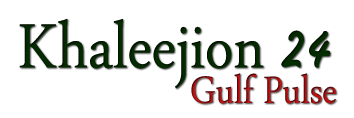In Haiti, why are there 500,000 illegal weapons despite the international arms embargo?

Haiti is experiencing a severe security crisis, as rival gangs fight for control of the capital, Port-au-Prince, and surrounding areas, terrorizing local communities through extortion, sexual violence, kidnapping for ransom, and murder.
UN member states agreed to impose an arms embargo on Haiti in 2022.
What is happening in Haiti, and how do weapons reach them despite the embargo?
Here are five things you need to know about this case.
How many weapons are there in Haiti?
Haiti does not manufacture firearms or ammunition, but according to the latest figures from the United Nations Human Rights Office, the number of illegal weapons in circulation is estimated at between 270,000 and 500,000.
These weapons are not limited to the numerous criminal gangs that control much of the capital, but are also common among the growing number of vigilante “justice” groups that claim to seek to protect people and property in Port-au-Prince’s troubled neighborhoods.
The impact of such a large amount of weapons in an urban area with a population of approximately 2.6 million people is devastating. In 2024 alone, more than 5,600 people were killed due to gang activities, according to the United Nations.
In just five days in early December 2024, at least 207 people were killed by gangs controlling the Jeremy Wharf area of the capital.
Human rights violations documented by the United Nations included mass killings, kidnapping for ransom, rape and sexual exploitation, destruction of property, and severe restrictions on access to basic services, especially health care and education.
Thousands of people were killed in Haiti due to guerrilla warfare.
What are the firearms in circulation?
It is difficult to accurately estimate the number of illegal firearms in the possession of gangs and vigilante groups, but there are indications that more sophisticated and lethal weapons are being used.
Haitian authorities have only limited success in stemming the flow of weapons. One arms shipment purchased in Miami, United States, and intercepted in the Dominican Republic in February 2025, included a Barrett M82 heavy semi-automatic rifle, sniper rifles, two Uzi machine guns, and more than 36,000 rounds of ammunition.

A man is receiving treatment in hospital for severe burns after gangs attacked the gas station where he worked and started a fire.
What does the arms embargo say?
In October 2022, the UN Security Council approved an arms embargo on Haiti, in addition to a travel ban and asset freeze on individuals, under… Resolution No. 2653.
The embargo specifically targets gangs and individuals deemed responsible for threatening peace and security in Haiti, and calls on UN Member States to prohibit the supply, sale or transfer of arms and related materials of all kinds, including technical assistance, training and financial support related to military activities. The resolution recognizes that the situation in Haiti constitutes a threat to regional peace.
How to circumvent the ban?
Known smuggling routes from the United States, especially from Miami – but also from New York via the Dominican Republic – continue to be exploited, often due to weak customs enforcement and corruption. US authorities intercept some shipments before they reach Haiti.
There is also evidence of weapons being shipped from Venezuela and other countries in South America. Weapons are often concealed in mixed shipments or declared as humanitarian or commercial goods to avoid inspection.
Fears are growing that assault rifles originally registered to private security companies operating in Haiti could fall into the hands of gang members.

Weapons seized by US law enforcement that were destined for Haiti.
What needs to be done to ensure compliance with the embargo, and how can the UN help?
The United Nations Office on Drugs and Crime, which deals with arms trafficking issues, emphasized that ensuring compliance requires “A comprehensive and coordinated approach at the national, regional and international levels”.
This means providing Haitian customs, port and border control authorities with the technical capabilities needed to detect, intercept and investigate illicit arms shipments. Currently, there is no large-scale scanner in all of Haiti that can efficiently identify the contents of a shipping container or truck.
Since most weapons enter Haiti via sea routes, improving maritime and port security – including inspections – is essential, as well as working more effectively with law enforcement authorities in countries of origin.
Providing more resources along the porous border with the Dominican Republic, which shares the island of Hispaniola with Haiti, would help stop illicit trade through informal crossings.
The United Nations helps coordinate Haiti with other countries in the region to ensure compliance, in addition to providing technical assistance to enhance arms tracing, customs oversight, and financial investigations.
The United Nations Office on Drugs and Crime confirmed that “The fight against corruption and illicit financial flows remains central to compliance with the embargo.”.
Because Haiti neither manufactures weapons nor ammunition, cutting off bullet supplies alone would effectively end the ability of gangs to fight among themselves and terrorize communities.
- For more: Follow Khaleejion 24 Arabic, Khaleejion 24 English, Khaleejion 24 Live, and for social media follow us on Facebook and Twitter





